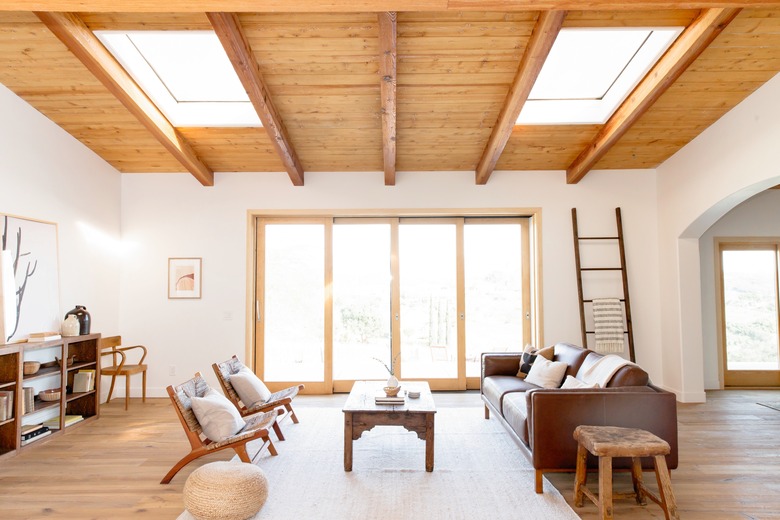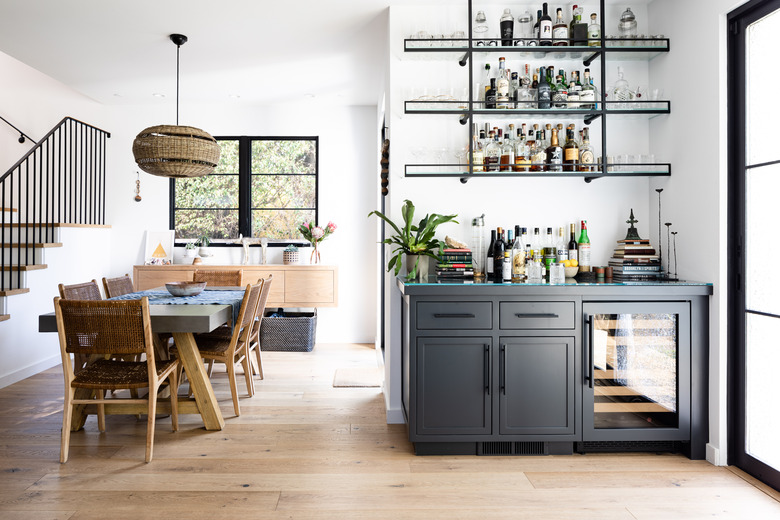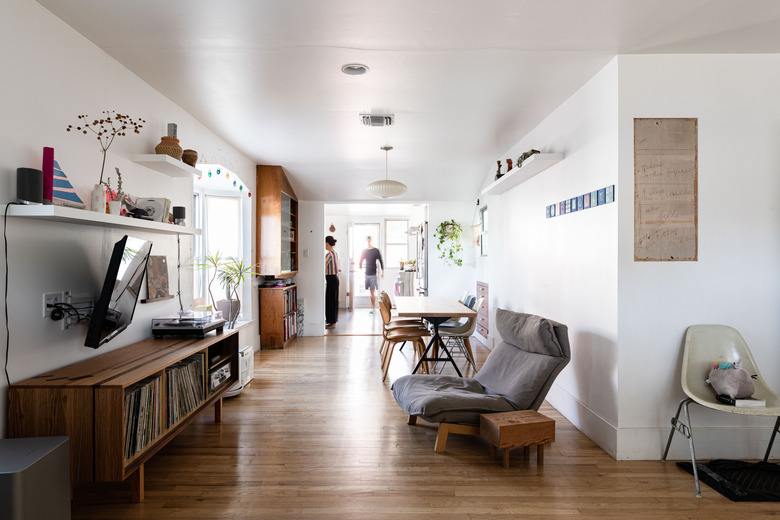Bamboo Flooring: What You Need To Know
Bamboo flooring is generally considered an alternative to hardwood and has earned a solid position in the flooring market in recent years. Most building centers now carry at least some bamboo flooring inventory, and many more options are available through bamboo suppliers.
Bamboo flooring makes a lot of sense—both from a decorating standpoint and a green, eco-friendly materials perspective. It is exotic in appearance, some with the characteristic knuckles and strand striations of natural bamboo, but it is also affordable. It comes in several different types and a few different colors and finishes. As with hardwood flooring, there are traditional nail-down versions of bamboo as well as easy-to-install floating floor options.
Bamboo Flooring Is Considered Eco-Friendly
Bamboo Flooring Is Considered Eco-Friendly
Bamboo is a renewable material. Botanically, it is a grass that can grow to harvestable size in just five to seven years. Most bamboo used for flooring comes from the giant Moso bamboo plant. These plants require very little or no fertilizer and regrow after harvest, and that is all very good on the green scale.
But there are issues with bamboo, too. Bamboo flooring is made with a lot of chemical binders and requires a good deal of energy-intensive processing. The flooring products usually are prefinished, with everything from lacquer to aluminum oxide. None of these chemicals or binders or finishes are environmentally positive, although some, like urea formaldehyde, are more problematic than others (and consequently many manufacturers have moved away from it).
The bottom line is that the raw material of bamboo flooring is a renewable resource that can be produced in sustainable ways, but the manufacturing and shipping of the finished flooring is pretty conventional.
How Bamboo Flooring is Made
How Bamboo Flooring is Made
Bamboo flooring is manufactured almost exclusively in China, where Moso bamboo is native. The manufacturing process is determined by the type: horizontal, vertical or strand-woven being the primary three.
Horizontal bamboo flooring is made by laminating and layering broad strips of the bamboo canes. Solid bamboo planks made this way usually have at least three layers. If the planks have very noticeable "knuckles" you are probably dealing with horizontal bamboo.
Vertical bamboo flooring is made by face-gluing together thick, narrow strips of solid bamboo. It is somewhat harder and more damage-resistant than horizontal bamboo flooring, but it is less commonly available.
Strand-woven bamboo flooring looks the least like natural bamboo, and more recent versions imitate exotic hardwoods and even traditional wood floorboards. It is manufactured by shredding or slicing bamboo canes into strips and sorting them by color. Some are "carbonized" in large ovens to give them a dark coffee color. The strips and shreds are mixed with resins and binders and pressed under high pressure and temperature before being dried and cured in kilns. The resulting material is cut into strips or planks for use in the finished flooring.
Types of Bamboo Flooring
Types of Bamboo Flooring
Bamboo flooring is very similar to hardwood plank flooring, in both construction and installation, and comes in solid and engineered versions. Solid bamboo flooring is made with strips or layers of solid bamboo glued together with either horizontal or vertical orientation. It can also be made with strand-woven bamboo, although this is less common. Engineered bamboo flooring consists of a thin top layer of bamboo bonded to a core of plywood or high-density fiberboard (HDF).
All types of bamboo flooring are available in click-together planks for a floating floor installation without glue or fasteners. You can also find tongue-and-groove versions for traditional nail-down or glue-down installation. Some tongue-and-groove planks can also be installed as a floating floor, but the edges of the planks are glued together rather than simply clicking together.
Bamboo flooring planks range in size from 3 1/2 to 7 1/2 inches in width, with 3 3/4-inch being the most common. Lengths vary from 3 to 6 feet.
Bamboo Flooring Finish Options
Bamboo Flooring Finish Options
Most of the bamboo flooring you can buy at building centers and flooring stores is sanded and prefinished at the factory. Some is hand-scarped or "sculpted" to create a texture, but for the most part you will find flat, glossy finishes. "Rod cut" flooring, which has a relatively matte finish, tends to show less wear than glossier finishes (in much the same way that glossy paint shows imperfections more than flatter paint). You can find a mix of natural color, carbonized caramel color, and even blends of both woven together for contrast.
Bamboo Flooring Hardness
Bamboo Flooring Hardness
There is plenty of dispute about the relative hardness of bamboo flooring. The hardness of wood and bamboo materials is commonly measured with the Janka hardness test; the higher the number, the harder the material. For reference, red oak measures 1,290 on the Janka scale; maple is 1,450 and Brazilian ipe (a tropical hardwood) is 3,684.
By comparison, bamboo flooring ranges from about 1,300 to almost 4,000 on the Janka scale. The wide variation is largely due to the flooring's type. Strand-woven bamboo is much harder than natural (horizontal or vertical) solid bamboo materials. Bamboo that has been carbonized (for color) is less hard than natural bamboo.
If durability is a top priority, strand-woven bamboo is the best option. Otherwise, you can expect about the same durability with solid bamboo that you would get with standard hardwood flooring. This means that it can stand up well to everyday use, but it's not impervious to dents from high heels or heavy furniture or to scratches from pets' claws and other household hazards.
Where to Install Bamboo Flooring
Where to Install Bamboo Flooring
The rooms in which bamboo is appropriate are pretty much the same as with any wood flooring. It is durable enough for high-traffic areas and rooms that see a lot of use, including bedrooms, dining rooms and family rooms, as well as hallways and entries. But it is not a highly water-resistant material. This means that it can be a maintenance issue in wet areas, like bathrooms and kitchens. Water left pooling on a bamboo floor can seep between the planks and damage the flooring, no matter how well the top surface of each plank is finished. Some bamboo flooring can be installed in basements, but it's important to follow the manufacturer's instructions—and its warranty requirements—when installing bamboo below grade.
Where to Buy Bamboo Flooring
Where to Buy Bamboo Flooring
Bamboo flooring is sold at large home centers, but these retailers typically have a limited selection. A better option is to find a reputable bamboo flooring dealer that is either local or ships to your area. A quick internet search will reveal many options. If you're interested in bamboo for its eco-friendly benefits, look for a flooring manufacturer that is committed to sustainable forest management and low-impact fabrication. Some manufacturers offer products that are certified by the Forest Stewardship Council (FSC).
In terms of cost, entry-level bamboo flooring starts at around $2 per square foot. Higher-end products, including vertical grain or hand-scraped options, are more likely to cost from $5 to $7 per square foot. These prices are the materials only. Installation and related materials are extra, of course.
Bamboo Floor Cleaning and Care
Bamboo Floor Cleaning and Care
Bamboo floors are as easy to care for as any hardwood or other wood flooring. The most important thing is to sweep or vacuum frequently to remove dirt and grit that can scratch the floor's finish. Bamboo floors seldom need deep cleaning (especially in living areas, not kitchens and bathrooms) and should not be wet-mopped or steam-cleaned. Regular cleaning with a slightly damp microfiber mop or even just a towel will take care of most routine maintenance.
Like many hardwood floors, some bamboo flooring can be sanded and refinished. But as with any product that has a factory-applied wear layer, you'll want to consider this option carefully, as the result of your new finish will never be "like new," and the aluminum oxide wear layer is pretty nasty when sanded.


